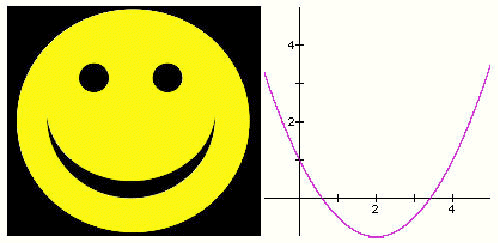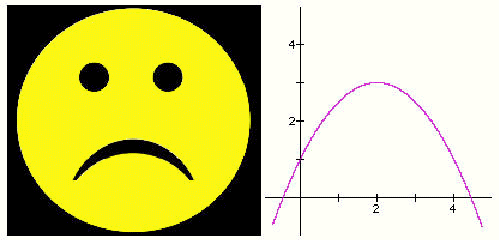What the Standard Form of a Quadratic can tell you about the graph
The graphs of quadratic equations come in two varieties: smiling and frowning (see
Figure 1, ). The standard form of a quadratic equation:
y = a · x 2 + b
· x + c,
can tell you whether a given graph will smile or frown. If the number (or coefficient), a,
multiplying the x 2 is positive then the quadratic is smiling. If the number a is negative
then the quadratic is frowning.

Figure 1(a): The graph of a smiling quaratic equation opens upwards and outwards, like a smiling mouth.

Figure 1(b): The graph of a frowning quaratic equation opens downwards and outwards, like an unhappy
mouth.
The appearance of the quadratic equation (smiling or frowning) is controlled by the
sign
of the number a.
|
Sign of the number a in the quadratic
equation |
Appearance of the graph of the quadratic
equation |
|
Negative |
Frowning |
|
Positive |
Smiling |
Table 1: Effect of sign of a on appearance of quadratic graph.
|